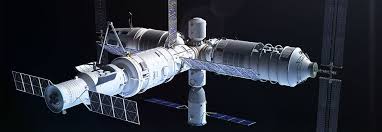
Breaking News
 HERE'S WHAT NO CASH ACTUALLY MEANS (Dave Ramsey re-post)
HERE'S WHAT NO CASH ACTUALLY MEANS (Dave Ramsey re-post)
 The Silver Shift: Why Stackers Are DUMPING 90% Silver & Buying SilverBitz!
The Silver Shift: Why Stackers Are DUMPING 90% Silver & Buying SilverBitz!
 Eye-bouncing - #SolutionsWatch
Eye-bouncing - #SolutionsWatch
 'Targeted, Antisemitism': 16 Dead, 38 Injured After Father & Son Terrorists Attack...
'Targeted, Antisemitism': 16 Dead, 38 Injured After Father & Son Terrorists Attack...
Top Tech News
 This tiny dev board is packed with features for ambitious makers
This tiny dev board is packed with features for ambitious makers
 Scientists Discover Gel to Regrow Tooth Enamel
Scientists Discover Gel to Regrow Tooth Enamel
 Vitamin C and Dandelion Root Killing Cancer Cells -- as Former CDC Director Calls for COVID-19...
Vitamin C and Dandelion Root Killing Cancer Cells -- as Former CDC Director Calls for COVID-19...
 Galactic Brain: US firm plans space-based data centers, power grid to challenge China
Galactic Brain: US firm plans space-based data centers, power grid to challenge China
 A microbial cleanup for glyphosate just earned a patent. Here's why that matters
A microbial cleanup for glyphosate just earned a patent. Here's why that matters
 Japan Breaks Internet Speed Record with 5 Million Times Faster Data Transfer
Japan Breaks Internet Speed Record with 5 Million Times Faster Data Transfer
 Advanced Propulsion Resources Part 1 of 2
Advanced Propulsion Resources Part 1 of 2
 PulsarFusion a forward-thinking UK aerospace company, is pushing the boundaries of space travel...
PulsarFusion a forward-thinking UK aerospace company, is pushing the boundaries of space travel...
 Dinky little laser box throws big-screen entertainment from inches away
Dinky little laser box throws big-screen entertainment from inches away
 'World's first' sodium-ion flashlight shines bright even at -40 ºF
'World's first' sodium-ion flashlight shines bright even at -40 ºF
China reveals design for planned Tiangong 3 space station

The China National Space Administration (CNSA) presented several slides of the design of its future space station, called Tiangong 3—meaning "Heavenly Palace" in Chinese. The station is expected to be built between 2018 and 2022.
According to the released slides, the station's core module, "Tianhe 1" (which means "galaxy"), will include a laboratory with integrated modular racks for storing scientific equipment. It will also have five docking ports and a robotic arm.
image: http://www.spaceflightinsider.com/wp-content/uploads/2016/05/tianhe_blog_sina-655x179.jpg
A diagram of the Tianhe 1 module. Image Credit: aihangtian via blog.sina.cn
With a mass of about 24 tons (22 metric tons), this module will be 59 feet (18.1 meters) long and 14 feet (4.2 meters) in diameter. Tianhe 1 is expected to launch sometime in 2018, most likely atop a Long March 5 booster, and will serve as a docking hub for future modules and resupply spacecraft.
Tiangong 3 will have two science modules: "Wengtian" and "Mengtian". These modules are planned to be used for performing scientific research in microgravity. Both will be 47 feet (14.4 meters) long and will have the same maximum diameter and launch weight as the core module.
Popular Science reports Wengtian will be fitted with a set of internal modular racks for scientific missions. It will also have its own small robotic arm to assist taikonauts in conducting experiments out in the vacuum of space. The site noted that Mengtian will have a docking port for interfacing with spacecraft, capable of supporting other modules and spaceships for logistics and repair.
image: http://www.spaceflightinsider.com/wp-content/uploads/2016/05/wentian_sina_cn-655x198.jpg
A diagram of the Wengtain science module. Image Credit: aihangtian via blog.sina.cn
The science modules are scheduled to be sent to space in the 2020–2022 time frame.
"Two space labs will be launched later and dock with the core module, Tianhe 1," Wang Zhongyang, spokesman for the China Aerospace Science and Technology Corporation said in April. "The construction of the space station is expected to finish in 2022."





